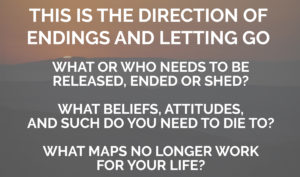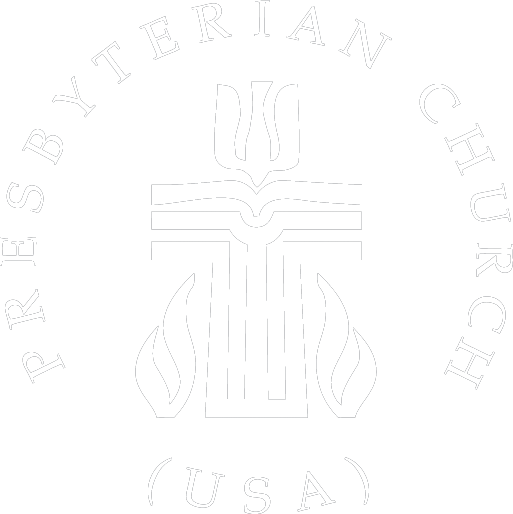On Sunday at Pie in the Pews I distributed this as a way of describing our ongoing discipleship. I think it is helpful for day to day living. It is a way of understanding and working through the events of our lives and making sense of what God is doing.
The Paschal Mystery: A Cycle for Rebirth (Paschal referring to the events of and following Easter)
For Christians, loss is never the last word. Accordingly, Walter Brueggemann, a noted biblical scholar, provides a map of the spiritual journey that corresponds to the paschal mystery of God’s bringing new life from death. According to him, spirituality is our walk with God through recurrent patterns of:
• Being securely oriented: This is when I am in an environment, physically, emotionally, and/or spiritually. Anytime when my life has reached an equilibrium. This doesn’t have to be positive, it can be negative, like the settling in of the people of Israel, while in captivity to the Egyptians.
• Being painfully disoriented: Usually it means an erosion or a tearing of the fabric of equilibrium. What I could count on is not there as it used to be. We feel this often after the loss of a loved one, or a move, or a job loss, or?
• Being surprisingly reoriented: Often it is not sudden. We wake up one day and things are different. There is hope, joy, a new way forward, faith. Signs that the Spirit of God is at work and we have a renewal of purpose and direction.
“Faith is not our way to God on our terms, it is the way of God to us on his terms.” – Eugene Peterson, The Way of Jesus, p.55
When Peterson writes this, he is reminding us that the above patterns are all often the work of God.
Think with me just about the people of Israel in Egypt. Their enslavement was a function of the unfaithfulness of their forefathers in selling off Joseph. His rise in power in Egypt and his authority to save his family from famine. But not being Egyptian themselves, when Joseph and memory of him was lost, so were the people of Israel. They went from being securely oriented under the protection of Joseph and Pharaoh, to a time of painful disorientation as slaves, to a surprising reorientation under Moses. This pattern is repeated over and over again. God is in the middle of the whole story.
“Theologically, looking at Jesus’ teachings and especially at his death and resurrection and what follows from them, we can see that there are five clear, distinct moments in the paschal cycle: Good Friday; Easter Sunday; the forty days leading up to the Ascension; the Ascension; and Pentecost. Each of these is part of a single process, an organic one, and each needs to be understood in relation to the others to make sense of the paschal mystery. Each is part of one process of transformation, of dying and letting go so as to receive new life and new spirit.
1. Good Friday… ‘Name your deaths’
2. Easter Sunday… ‘Claim your births/new life’
3. The Forty Days… ‘Grieve what you have lost and adjust to the new reality’
4. Ascension… ‘Do not cling to the old, let it ascend and give you its blessings’
5. Pentecost… ‘Accept the spirit of the life that you are in fact living’”
(This is taken from The Holy Longing by Ronald Rolheiser, p.147)
My spiritual director, Wilkie Au, would ask me at some point, to think of the events in my life as representing different points on a compass. To understand more fully the Paschal Mystery, he would direct me to two points on the compass in particular.
He would first suggest I look West: The direction of the setting sun.

One of the things that I have become clear on, is that it requires letting go of what I cling to take hold of something new. I had a conversation recently with a friend who is leaving southern California and moving back to his roots in east Tennessee. He had to let go of friendships, and his sailboat, and his house, to embrace a new life. He had decided that the current map of his life, no longer worked for him here. Looking west can remind us to ask the questions above.
Wilkie would then suggest I look East: The direction of the rising sun.

In attending to our losses, to the things that we are either willingly, actively, passively or begrudgingly, letting go, what new elements am I being asked to embrace?
Part of what I like about Christian spirituality is that it is ever realistic and down to earth.
When Rolheiser says, we should “Accept the spirit of the life that you are in fact living”, he is stating an important aspect of the spiritual life. It is rooted and grounded in every day realities. It is not some spiritual “plane” that I’m trying to achieve. God is in the mess of everyday living. He accompanies us in the now. He will reorient us and bring us joy and peace and goodness and all the other gifts of the Spirit in real time and real life. No escapism. This is Pentecost faith. The faith that celebrates the infilling of God’s people with the Spirit of Christ.
Join in the journey as we walk with Jesus through Holy Week and beyond Easter to Pentecost. Stop and pay attention to the movement of God in your life as described above. I hope this helps.




Thank you for this message, Craig! As you quoted, “Faith is not our way to God on our terms, it is the way of God to us on his terms.” – Eugene Peterson. Looking forward to tonight.
Thanks! I can use the attitude adjustment.
Thank you..